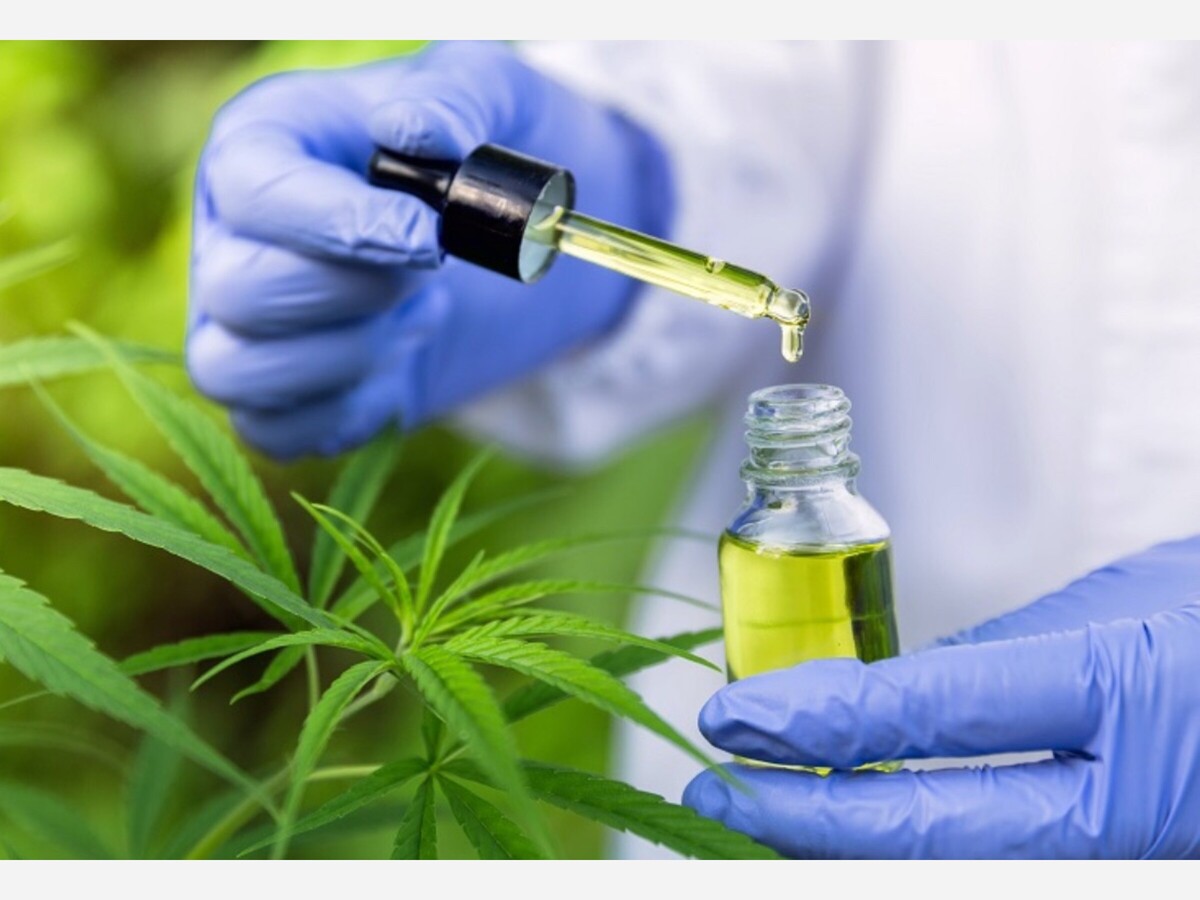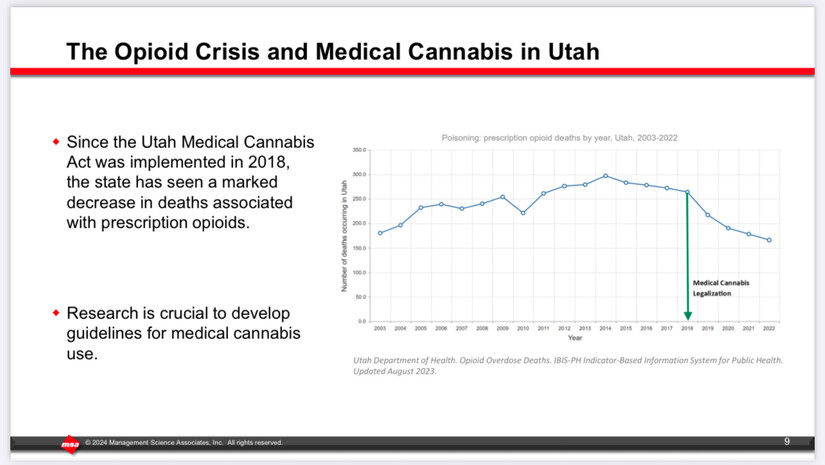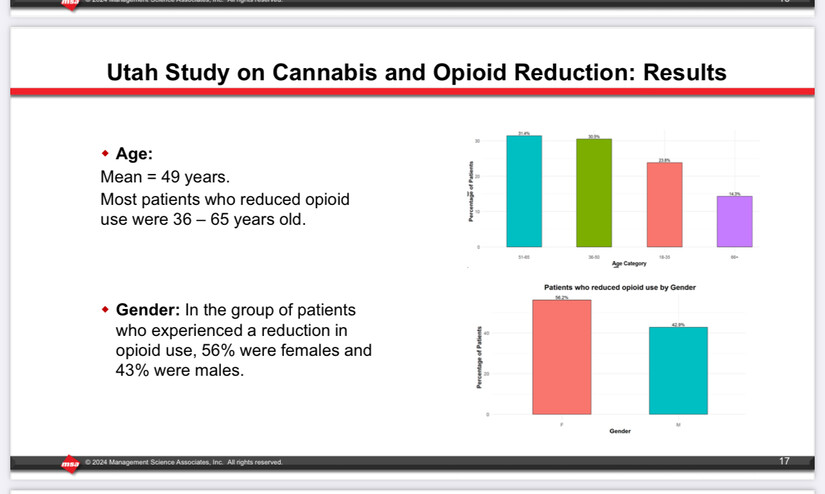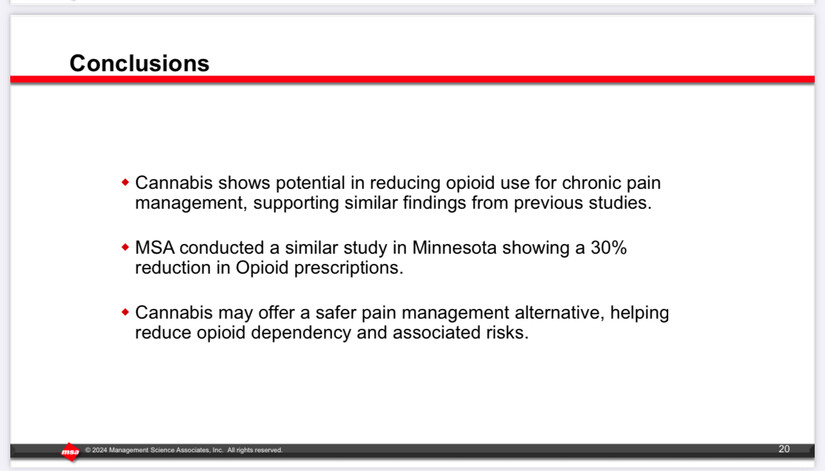Image


Since the legalization of medical cannabis there has been a noticeable decrease in deaths related to prescription opioids. The state of Utah has been hit significantly by the opiod epidemic. The state noticed a trend of reduced opioid trends when medical marijuana was introduced as an optoon thus the state commissioned studies whose results or findings have been recently released.
The opioid crisis remains a significant public health concern, affecting countless individuals and communities across the United States. In Utah, the impact of this crisis has been profound, leading to a surge in overdose deaths and widespread dependence on prescription opioids.
Since the legalization of medical cannabis in 2018, there has been a noticeable decrease in deaths related to prescription opioids in the state. This shift suggests that the introduction of cannabis as a therapeutic alternative may have contributed to a reduction in opioid use among patients seeking pain relief.
Previous studies have demonstrated that states with medical cannabis laws have observed reductions in opioid prescription rates and opioid-related mortality. The increasing acceptance of medical cannabis provides an opportunity to explore its role in addressing the ongoing challenges of opioid misuse and addiction, potentially offering safer treatment options for those in need. In collaboration with Dragonfly Wellness, which provided comprehensive point-of-sale data, the researchers studied the behaviors and trends of medical cannabis among patients in Utah which included a small number from Oregon and New Mexico.
Members of Utah’s Medical Cannabis Policy Advisory Board heard a presentation last week on the research, which was prepared by the analytics firm Management Science Associates (MSA). Overall, results of the study indicate that “cannabis has a substantial role to play in pain management and the reduction of opioid use,” it says.
By linking Utah's Dragonfly transaction data with clinical data from electronic health records of the state of Utah Management Science Associates aimed to explore cannabis' effects on certain chronic pain conditions and its potential to reduce opioid prescriptions.
Prior research suggests that cannabis may serve as an adjunctive therapy for chronic pain, leading to decreased opioid usage

Per the report the biggest reduction in opiod use occurred between those ages 36 to 65, the reduction in opioid use occurred with 56% being female and 43% male.

Management Science Associates suggests that the medical community continues to seek safer pain management options,” the report concludes, “cannabis may become a key component of treatment strategies, particularly for chronic pain patients.”
“These findings support the hypothesis that cannabis can significantly reduce opioid use among chronic pain patients,” it adds. “This is crucial as it provides a potential pathway to tackle opioid dependency, offering a less addictive alternative for chronic pain management with fewer side effects.”
Reductions were not unique to Utah but were witnessed in Minnesota in a study commissioned by the same organization..

The new Management Science Associates study that was presented at the advisory board meeting evaluated 186 pain patients, looking at transactions at medical marijuana dispensaries and matching that data with medical records “using [an] MSA patented, HIPAA compliant de-identification system.”
Patients were split roughly evenly between female (54 percent) and male (45 percent) and were overwhelmingly white (87 percent). Ages ranged from 23 to 89, with a mean age of 49. Virtually all (98.9 percent) were from Utah, with a small number from Oregon and New Mexico.
Specifically, there was a 53.1% reduction,” the MSA report says.
Despite the new evidence suggesting drops in opioid consumption and overdose deaths in Utah following the legalization of medical marijuana, the new study says more research is needed.